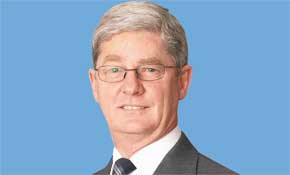
Details of PBL’s proposed printing and distribution facility for its ACP magazines business have been revealed on a NSW government website, with the facility set to employ up to 200 full-time employees in a 54,000sqm building.
According to documents submitted to the NSW Department of Planning, the site will be built in the suburb of Smithfield and include up to seven printing presses. The facility will operate 24 hours a day, seven days a week.
The new facility will operate as the hub for ACP’s NSW, Victoria and Queensland operations, with bindery, paper storage, and collating and distribution areas also included in the company’s plans.
Revealingly, the exact cost of the project is still yet to be determined, possibly rising as high as $215m.
“The proposed building alterations and additions have an estimated cost of approximately $15m,” the documents state.
“The plant and equipment investment is estimated to be between $135m and $200m, depending on the final selection of equipment.”
The plant will be built on a 7.85ha site most recently used by Coca Cola as a warehouse and distribution centre, with PBL currently in negotiations with site owner Goodman Group to lease the property.
“The proposal offers significant operational and economic efficiencies in the printing process to enable urgent production deadlines to be met, as well as environmental benefits derived from the consolidation of all printing activities at a single site,” according to the documents.
The site was originally slated to be up and running by 2011, though PBL chief executive Ian Law admitted in June last year that “the start date might slip from late 2011 into 2012”.
PMP currently has a contract to handle ACP’s printing until the new facility is fully operational, with an option on a further two years if it isn’t ready by the scheduled date.
“It’s crunch time,” Allely (pictured) said to ProPrint. “If they move to order equipment, secure a site and implement a strategy, and everything goes well and there’s no interruption and nothing goes outside of the plan, then there’s a chance they could get it up and running in time.”
“But my experience with projects of this complexity is that often things happen that you didn’t plan for, that cause you to have delays, and, therefore, create significant project risk.”
“But I’m confident that the people who run PBL and ACP are experienced and they wouldn’t be making a decision that would put the business at risk. They’re all professionals,” he added.
PMP has previously cast doubt on the feasibility of PBL’s plans. In May 2009, Allely said he was “relatively confident” the proposal would not go ahead.
In an interview with ProPrint, he said he continues to “struggle with the economics of the decision”.
“When you look at the economics of establishing a web heatset facility in Australia when there is already enough capacity in the market to meet the current demand, and enough capacity meet more than the current demand, one struggles to understand why anyone would want to put more capacity into the market,” he said.
“Having said that, ACP are absolutely serious about wanting to create their own printing and distribution facility.”
“I always remain confident that common sense will prevail,” he added.
Comment below to have your say on this story.
If you have a news story or tip-off, get in touch at editorial@sprinter.com.au.
Sign up to the Sprinter newsletter
